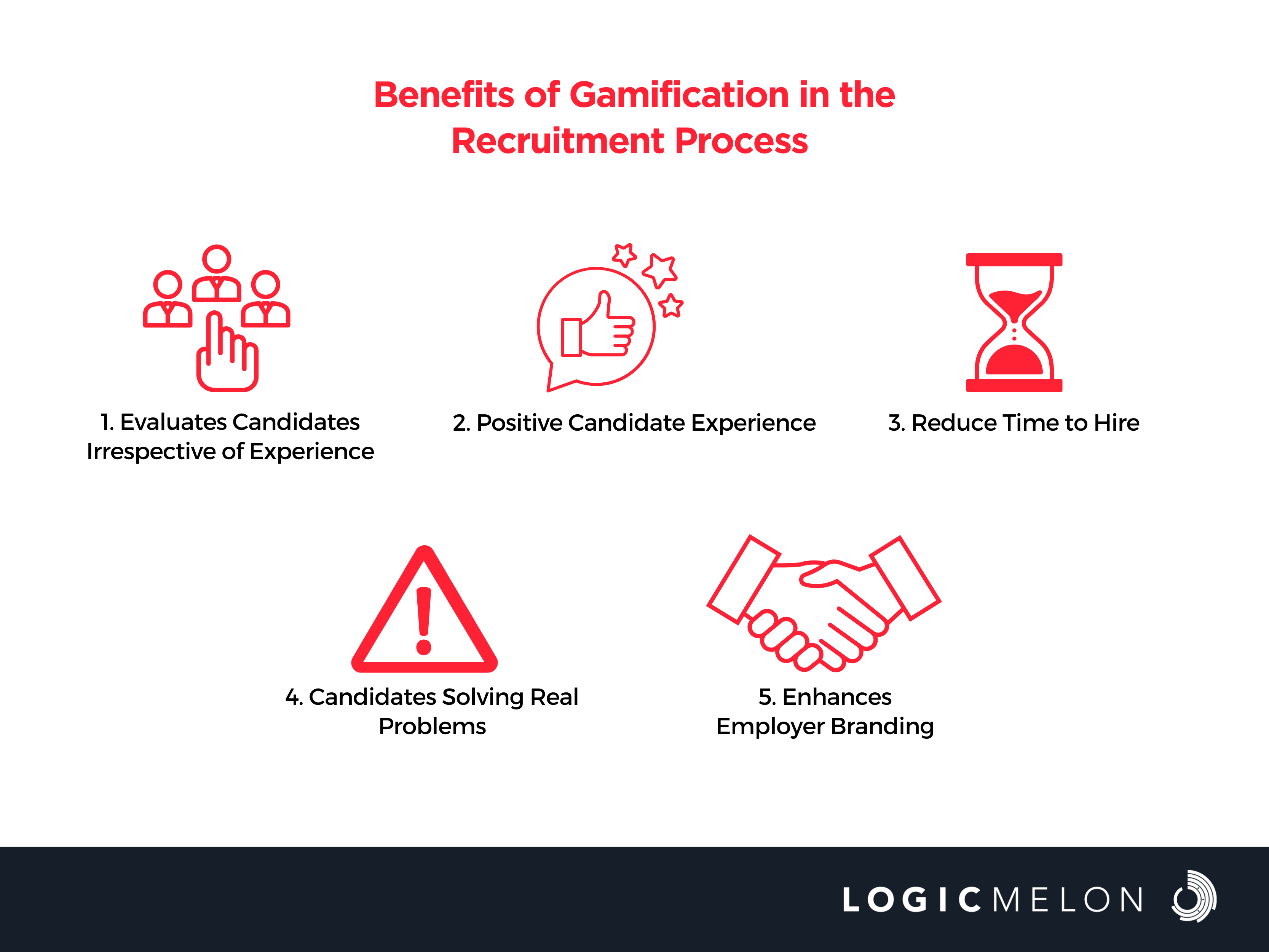Gamification in Recruitment
In the dynamic world of recruitment, traditional methods can often feel monotonous and time-consuming. Enter gamification – a revolutionary approach that infuses fun, excitement, and interactivity into the recruitment process. Gamification uses game theory, mechanics, and design to engage candidates and motivate them to embark on the hiring journey. Say goodbye to mundane interviews and hello to interactive quizzes, behavioural tests, and company-related challenges that make screening conversations entertaining and meaningful.
Variety of Games:
To master the art of gamification in recruitment, it’s essential to strategize when to introduce games to the candidates. The possibilities are vast, ranging from employing a single game to testing candidates with a variety of challenges. Each game caters to diverse preferences and play styles, ensuring candidates remain intrigued and motivated throughout the process. Tailor games to specific roles, assessing candidates’ skills and attributes to find the perfect match for your organisation.
Games to Replace Application Forms?
Recruitment can be a time-consuming process, especially when sifting through piles of resumes and applications. But what if there was a way to make the screening phase engaging and efficient? Gamification offers an enticing alternative to traditional application forms. By creating interactive games that assess specific skills and creativity, recruiters can captivate candidates while gaining valuable insights into their problem-solving abilities. The result? A faster elimination process and a pool of innovative and time-conscious talent. Gamification promotes a positive candidate experience.
Benefits of Gamification in the Recruitment Process:

1. Evaluates Candidates Irrespective of Experience:
Standardised gamified assessments ensure a fair evaluation of candidates’ job-related skills, reducing potential biases and providing a realistic representation of their abilities.
2. Positive Candidate Experience:
Bid farewell to tedious assessments! Gamification engages candidates, leading to a self-opt-out of those uninterested, leaving you with applications from truly engaged and relevant candidates.
3. Reduce Time to Hire:
Games are quick, exciting, and yield automatic results. This means less time waiting for responses and more time evaluating candidates in a fun and interactive manner.
4. Candidates Solving Real Problems:
Games provide candidates with opportunities to showcase their expertise, attracting new and diverse talent to join your talent community.
5. Enhances Employer Branding:
Showcasing your company culture and unique aspects through gamification elevates your employer brand in the digital era, attracting top talent to your organisation.
Applying Gamification in Recruitment:
1. Leadership and Dashboards:
Set predefined goals and objectives using leadership and dashboards, streamlining the identification of the best candidates.
2. Virtual Headhunting:
Reach out to a wide range of candidates by leveraging online platforms, professional networks, and innovative sourcing strategies.
3. Puzzles:
Test a candidate’s competency in an engaging and cost-effective manner, replacing traditional and time-consuming testing procedures.
4. Rewards:
Implement a points and badges system on your branded career site to identify top-rated candidates and streamline the recruitment process.
Future of Gamification in the Recruitment Process:
The future of gamification in recruitment looks promising as recruiters leverage unique approaches to showcase employer branding and identify the best-fit candidates. 72% of people say gamification motivates them to do tasks and work harder on the job. Interactive and in-depth interactions will replace traditional interviews, assessing candidates’ true potential and genuine behaviour. By choosing candidates aligned with organisational targets and culture, gamification elevates recruitment to a whole new level.
Frequently Asked Questions
1. How to gamify the recruitment process?
Transform the traditional interview process into a game-like experience, allowing candidates to authentically represent themselves and stand out from the competition.
2. How does gamification help to recruit candidates?
Gamification makes the recruitment process interactive and enjoyable for potential candidates, attracting a higher calibre of talent. It is an ideal way to assess problem-solving skills and creativity.
3. How does gamification help HR?
By incorporating gamification, HR can create enjoyable and motivating systems and processes, increasing productivity, and reducing costs.
Closing Thoughts:
Embracing gamification in the recruitment process can be an exciting journey, offering a myriad of benefits for hiring personnel. Modern-day hiring teams recognize that gamification is the key to attracting millennial candidates, who thrive on smartphones, virtual reality games, and social media. To ensure success, implement gamification thoughtfully, ensuring fairness, relevancy, and comprehensive assessments. Combine gamification with traditional interviewing for a well-rounded candidate evaluation, setting your organisation on the path to finding the perfect match for every role. Level up your hiring game with the power of gamification!
LogicMelon
Award-winning recruitment software that will find, attract, hire and analyse the way you want to work. At LogicMelon, we have experienced software recruitment marketing specialists to help you build effective recruitment solutions supported by the best customer service you’ll find anywhere!
Email: sales@logicmelon.com or call LogicMelon (UK) +44 (0) 203 553 3667 (USA) +1 860 269 3089
Agile Recruitment: What Is It, What Are the Benefits, and How Do I Implement It?
The world has witnessed the positive impact an agile approach can have on accomplishing projects and collaborating.
10 Time Management Skills that Every Employee Needs
Time management skills are crucial for a business to achieve its goals. The workplace is dynamic, and employees must adapt to the change.
How to Create an ATS Friendly Resume
The ATS-friendly resume is a document passed through the ATS (Applicant Tracking System).To pass the ATS scan, the resume has to be formatted properly and include the right words. Read the blog to know more.


